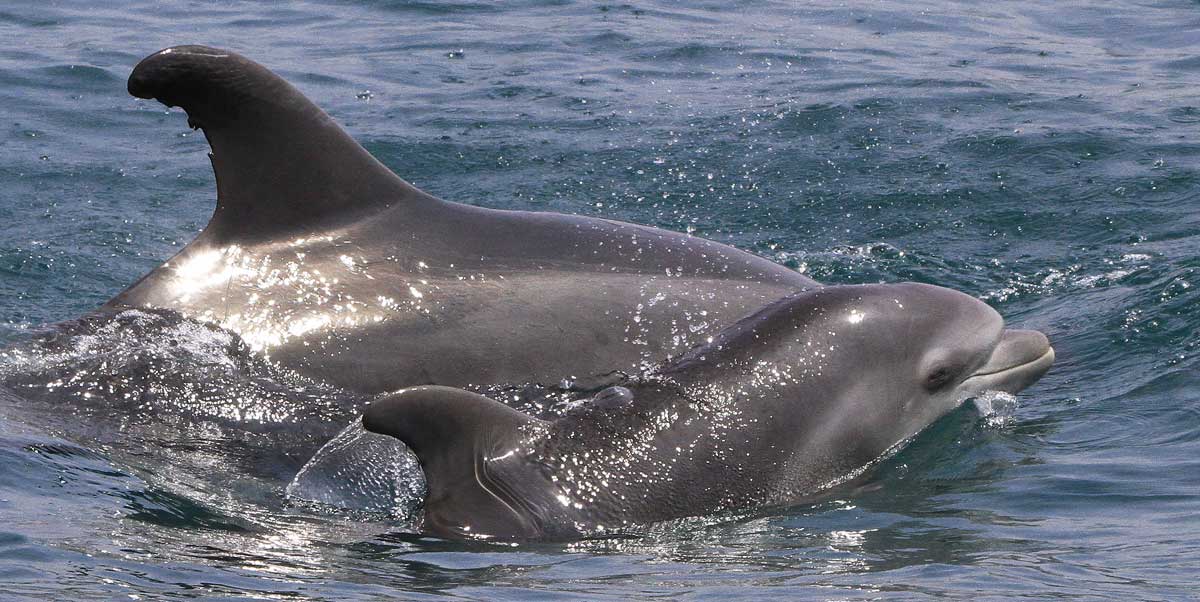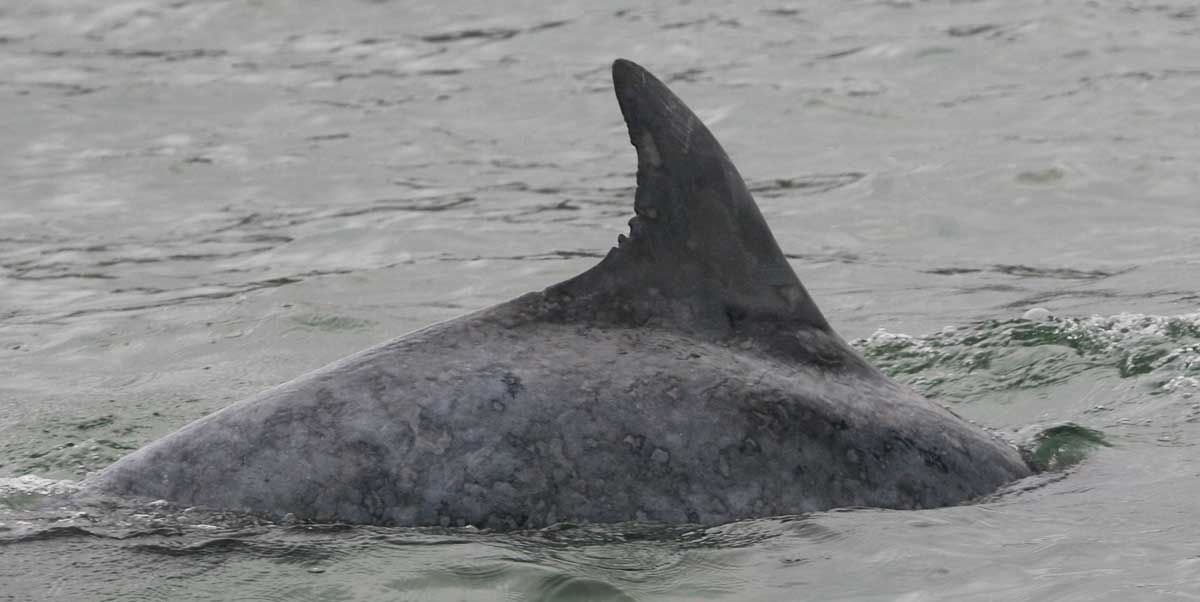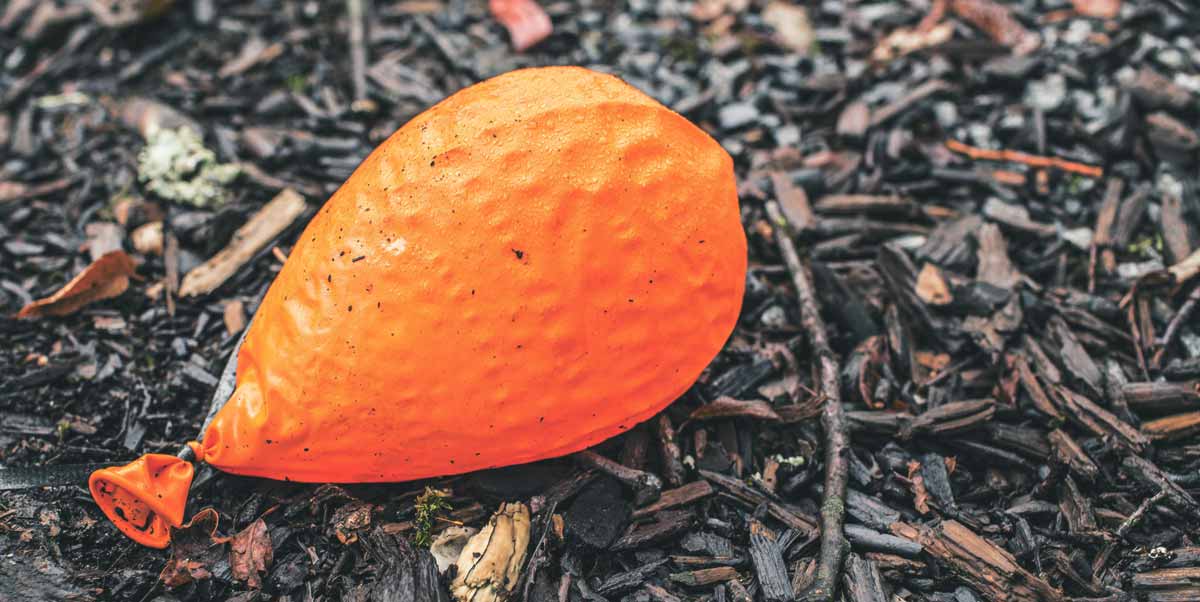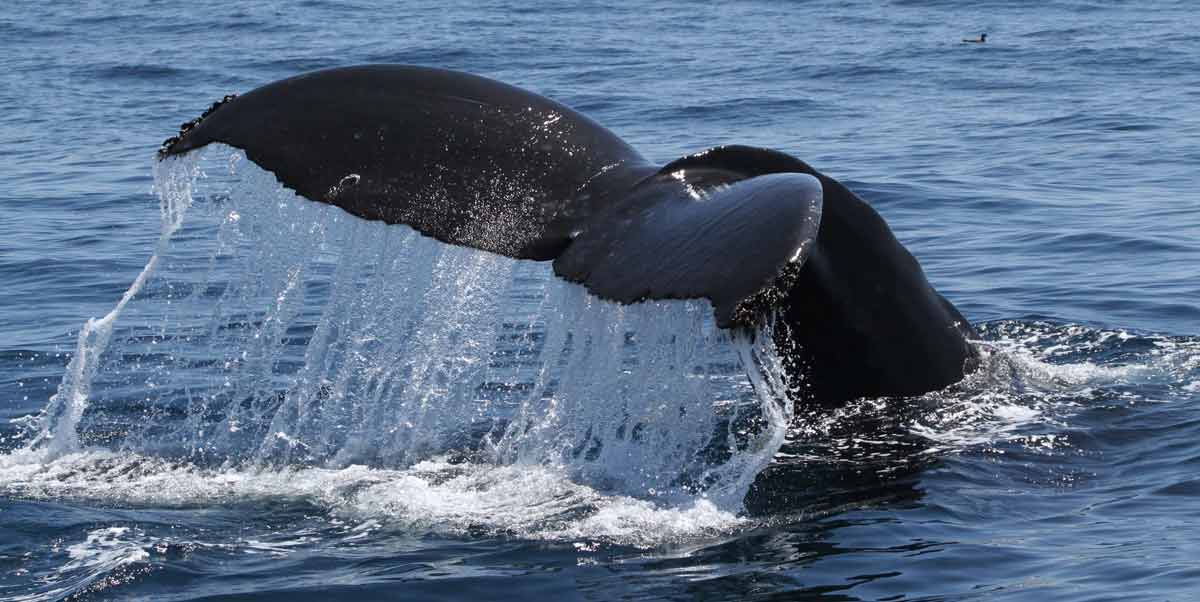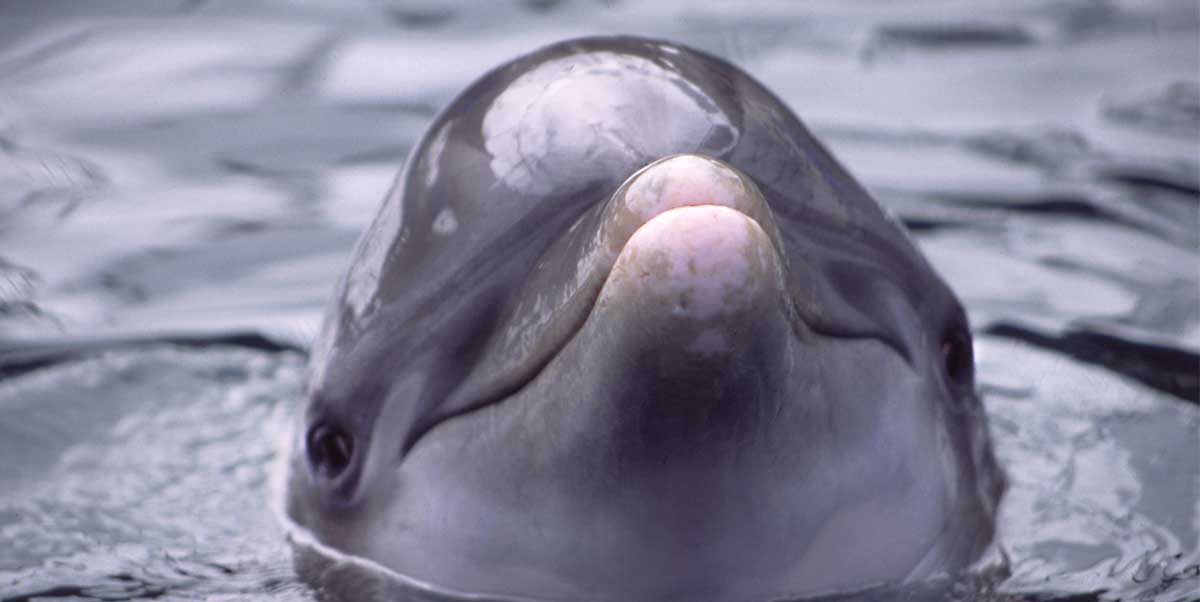Movement Patterns of Coastal Bottlenose Dolphins
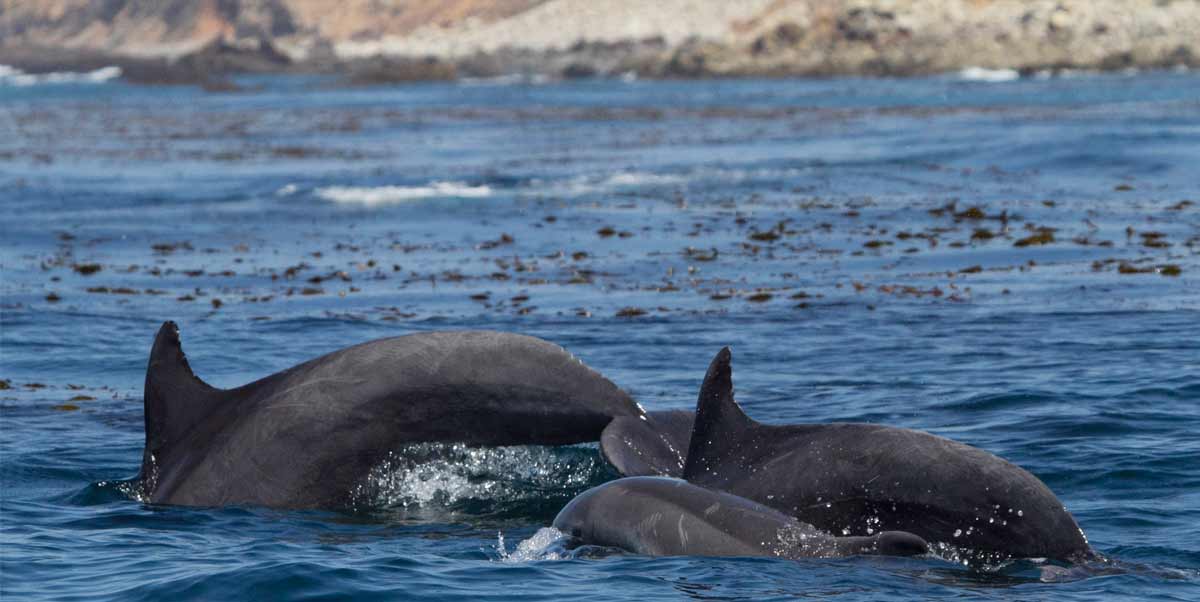
Why is this project important?
Our collaborative past studies show that coastal bottlenose dolphins are highly mobile and capable of rapid travel along the Baja California and California coastline. These extensive movements are related to fluctuations in local, regional, and likely Pacific-wide oceanic conditions that affect prey productivity and availability. This joint project is important for better understanding this population of dolphins that: moves along corridors just off our shores, feeds on some of the same fish we eat, and is exposed to many human-induced stressors and threats – including pollution, habitat alteration and vessel collisions.
What has our research team already learned?
The OCS team – in collaboration with other scientists – analyzed occurrence and movement data of coastal bottlenose dolphins from boat-based photo-ID surveys for a twenty-year period. The study was carried out in six study areas ranging from Ensenada, Mexico in the south to Monterey Bay, California in the north. Our primary goal was to determine movements between study areas, travel speed and travel distances.
The results of this collaborative effort (see publication) confirmed that this population of bottlenose travels regularly and extensively between nearshore locations from Ensenada to Monterey Bay. These coastal movements are likely due to the interplay between environmental variables, prey preferences, general behavior of these animals, etc.
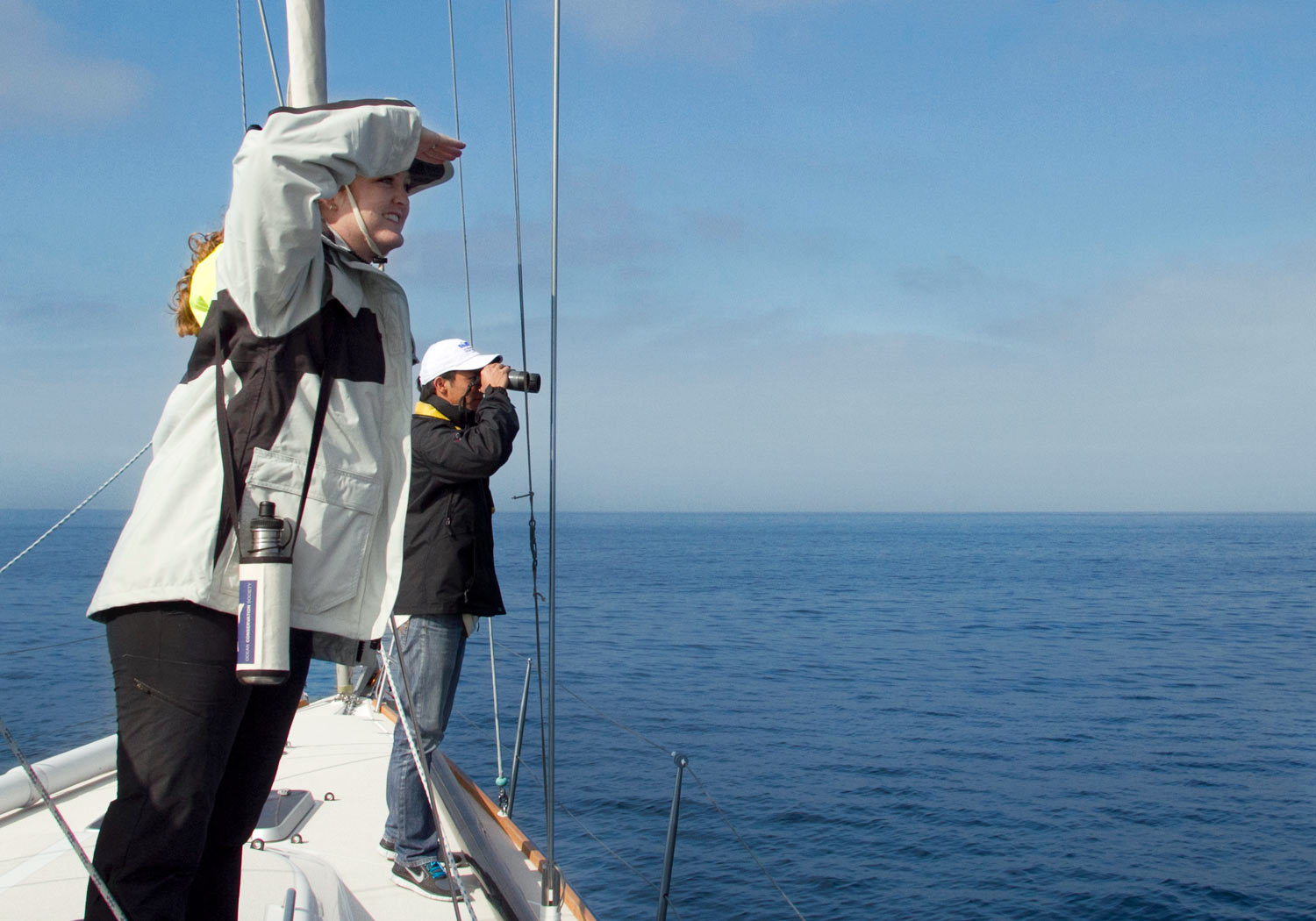
60 miles
per day: the fastest travel recorded for a bottlenose dolphin moving from San Diego to Los Angeles in two days!
What are our current project goals?
Our main goal is to continue our long-term, year-round data collection while sharing information with other researchers along the West Coast. The collective aim is to better understand range characteristics, foraging grounds, and movement patterns for these dolphins which are exposed to contaminated waters – and other stressors – during their long travels.
For instance, we’ve recently discovered that some of the individuals observed in our study area were also recorded off San Francisco and the Oregon Coast, indicating a further extension of their range.
A recent OCS study shows that coastal bottlenose dolphins in Santa Monica Bay use two different strategies while foraging at less than 500 m from shore; 1) at depth (on demersal prey) and 2) near the surface (on schooling fish).
The Santa Monica Bay is a foraging hotspot for coastal bottlenose (see our publications) as they spend considerable time along these shores feeding, often close to urban runoff sources. Another goal of this project is to determine these dolphins’ occurrence near localized polluted areas.
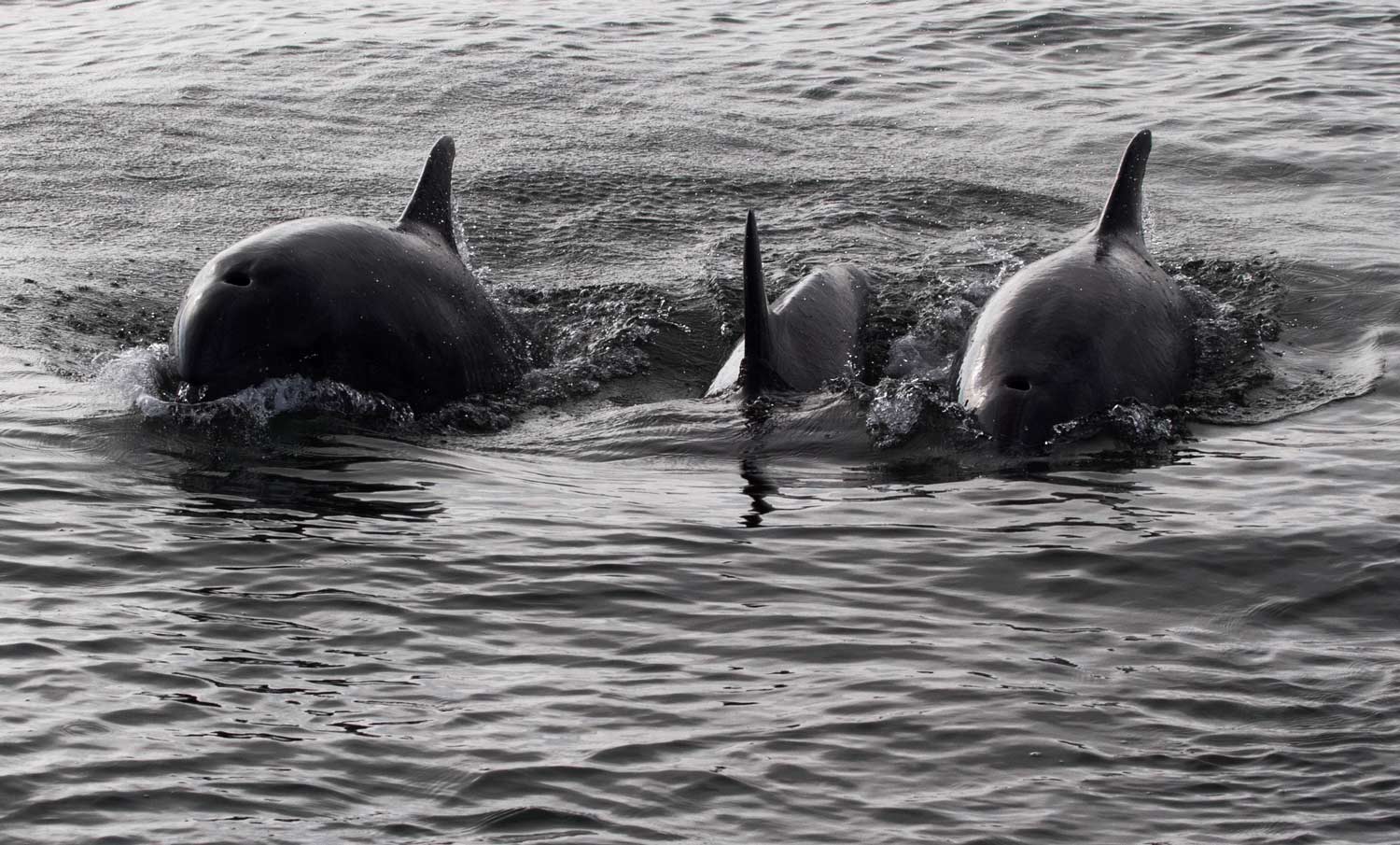
“Without monitoring bottlenose dolphins, we cannot understand how to conserve and protect them, or how successful we are in our conservation efforts.”
How is data collected for this project?
After all our photo-ID and matching work is completed, our data is shared with other scientists collaborating with the California Dolphin Online Catalog for comparisons between independently collected data sets for coastal bottlenose dolphins.
This study also builds on almost three decades of ecological baseline data collected by OCS using already established field methodologies, existing equipment, trained research staff, and ongoing scientific collaborations with other researchers, NGO’s and government agencies.
How is this project important for conservation?
We are concerned that the wide-ranging movements of coastal bottlenose dolphins may contribute to their feeding success, but also expose them to an array of risks (see our research and publication on skin diseases).
The coastal corridors have many natural and anthropogenic environmental threats and these animals can be in danger by being exposed to localized toxins that they might otherwise have avoided if they were a less mobile species.
DONATE FOR DOLPHINS
Take action for this critical dolphin species
They live just off our shores. We can see them from the beach. They surf and swim near us and they bow-ride our boats. They are our ocean friends but we are not doing enough to ensure that future generations will be able to enjoy them as we do. Your donation will help us continue photo-identification studies so we can better understand trends in their populations. The dolphins (and OCS) thank you for your valuable support!
EXPLORE

